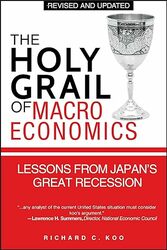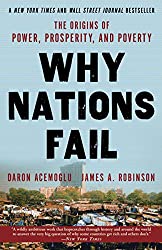
Rating: 7.6/10.
The Holy Grail of Macroeconomics: Lessons from Japan’s Great Recession by Richard C. Koo
Book by a macroeconomist about Japan’s long recession (the Lost Decades), which began in 1990 and lasted for about 15 years. When the book was written in 2009, Japan was beginning to recover. There were no obvious structural problems in the economy like deficits, inefficiency, any supply-side issues like worker strikes, the interest rate was very low, and the yen was strong.
The main argument is that Japan’s recession was primarily a balance sheet recession. Asset prices collapsed drastically in 1990, dropping by about 85% in some cases, leading many companies to carry large debts on their balance sheets. As a result, companies used all of their excess cash to pay back this debt over the next decade or so, even when the interest rate was near zero. This is contrary to macroeconomic theory, which suggests that when the interest rate is so low, companies should borrow money to invest in new projects since capital is so widely available. Shortly after the 1990 crash, the government began massive stimulus efforts for 15 years to prevent a significant drop in GDP and a great depression, but they have received little credit for averting a crisis that did not happen.
In a healthy economy, if a household earns $1000, spends $900, and saves $100, then all of the money becomes income for someone else in the economy. However, in a balance sheet recession, there is nobody willing to borrow the $100 saved, so it effectively gets lost in the economy, leading to a deflationary spiral. Due to debt problems, there are no borrowers even when the interest rate is zero; thus, the government must become the “borrower of last resort” through fiscal stimulus.
A balance sheet recession is not very visible, as CEOs try to conceal their company’s insolvency, so it is not apparent until much later, but observing the aggregate trends of the entire private sector, the change in demand becomes clear. During this time, the government must not reduce spending, since this would cause the economy to enter a tailspin as tax revenue shrinks when consumer spending decreases, and the government ends up even more deeply in deficit. Around 2006, the government attempted monetary tightening, and due to a tax law, losses can be carried forward for only seven years, so after this cliff, tax revenue increased, and this was dangerous to the economy since it is an effective tax rate hike with a corresponding increase in economic output. Quantitative easing was ineffective because of the lack of borrowers at any interest rate, even near zero; after the asset bubble, many corporations were averse to taking on any amount of debt.
The author views the Great Depression and several other recessions as cases of a balance sheet recession. In the case of the Great Depression, the government’s initial attempt was austerity to reduce government debt, but this led to a deflationary spiral and the highest unemployment of any major economy in history, similar to the case in Nazi Germany. Fiscal intervention during the New Deal was a much better solution, as it reduced unemployment and increased tax revenues. There is no quick and easy solution to a balance sheet recession; after the bubble has burst, it is impossible for government measures to restore it to bubble prices, so it is the government’s responsibility instead to prevent the bubble from forming in the first place. By then, it is foolish, after the recession has started, to have policies of austerity for the purpose of avoiding government debt, since it leaves the next generation in an even greater depression that requires even more fiscal intervention to fix, and you’re worse off than if you had started the intervention earlier. Thus, the central bank must realize if the economy is in a yang phase (good positive growth) or a yin phase (recession), and must not try to apply yang-phase policies like debt reduction when the reality is a yin phase.
In the final appendix, the author criticizes the proposal made by some economists to solve a recession with “helicopter money”: printing money and distributing it evenly to stimulate demand. He explains why this approach does not work: sellers of goods and services will no longer know the value of money that is being created in this manner. The value of money is a common good that everyone can agree upon regarding its true value. Without this consensus, a barter economy would be extremely inefficient, as everyone would need to know the value of obscure goods, which is impossible in a complex economy.
Overall, I found this book to be excessively one-sided in its support of the balance sheet recession, a concept that is reiterated throughout the text and used to explain every recession in history. Even the Great Recession of 2008 is analyzed using this theory, which seems premature since the book was written in 2008 and revised in 2009, a time when many facts were still unclear. Additionally, the author ignores many other possible factors, including structural inefficiencies and demographic problems, which have been suggested as reasons for some recessions (including Japan’s). Instead, he views all recessions as balance sheet recessions and proposes a one-size-fits-all solution of generous fiscal stimulus.



